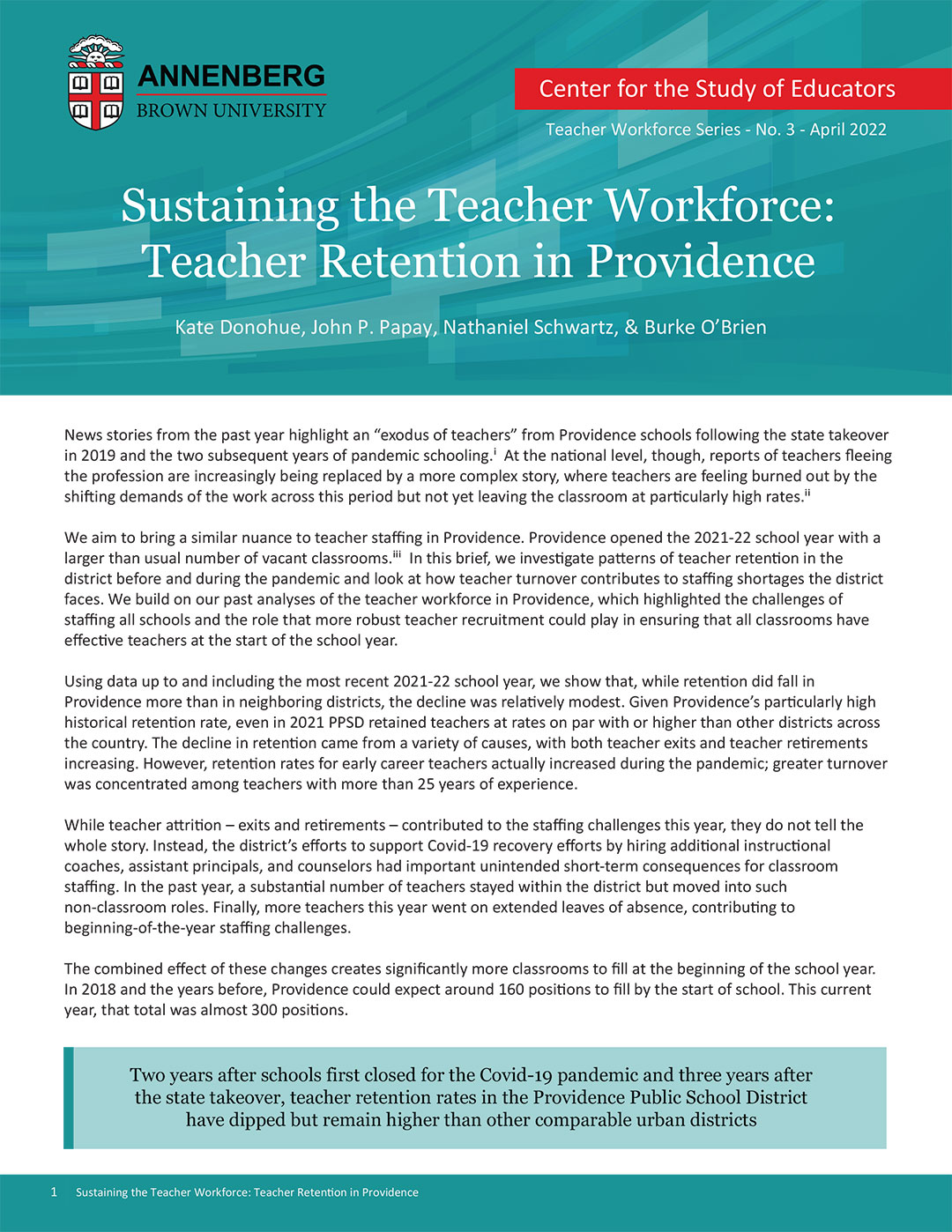Two years after schools first closed for the Covid-19 pandemic and three years after the state takeover, teacher retention rates in the Providence Public School District have dipped but remain higher than other comparable urban districts.
News stories from the past year highlight an “exodus of teachers” from Providence schools following the state takeover in 2019 and the two subsequent years of pandemic schooling. At the national level, though, reports of teachers fleeing the profession are increasingly being replaced by a more complex story, where teachers are feeling burned out by the shifting demands of the work across this period but not yet leaving the classroom at particularly high rates.
We aim to bring a similar nuance to teacher staffing in Providence. Providence opened the 2021-22 school year with a larger than usual number of vacant classrooms. Like teachers across the country, teachers in Providence are facing substantial burdens produced by the pandemic and are teaching in a difficult political environment. In this brief, we investigate patterns of teacher retention in the district before and during the pandemic and look at how teacher turnover contributes to classroom staffing shortages the district faces. We build on our past analyses of the teacher workforce in Providence, which highlighted the challenges of staffing all schools and the role that more robust teacher recruitment could play in ensuring that all classrooms have effective teachers at the start of the school year.
Using data up and including the start of the 2021-22 school year, we show that, while retention did fall in Providence more than in neighboring districts, the decline was relatively modest. Given Providence’s high historical retention rate, even in 2021 PPSD retained teachers at rates on par with or higher than other districts across the country. The decline in retention came from a variety of causes, with both teacher exits and teacher retirements increasing. However, retention rates for early career teachers actually increased during the pandemic; greater turnover was concentrated among teachers with more than 25 years of experience.
While teacher attrition – exits and retirements – contributed to the classroom staffing challenges this year, they do not tell the whole story. Instead, the district’s efforts to support Covid-19 recovery efforts by hiring additional instructional coaches, assistant principals, and counselors had important unintended short-term consequences for classroom staffing. In the past year, a substantial number of teachers stayed within the district but moved into such non-classroom roles. Finally, more teachers this year went on extended leaves of absence, contributing to beginning-of-the-year staffing challenges.
The combined effect of these changes creates significantly more classrooms to fill at the beginning of the school year. In 2018 and the years before, Providence could expect around 160 positions to fill by the start of school. This current year, that total was almost 300 positions.
While these changes create issues with staffing, they also offer potential opportunities for the district. More teachers are moving into broader support positions, building a more substantial career ladder to retain high performing teachers. And, the ultimate impact of teacher turnover on students depends on who leaves and who stays. The data suggest that teachers who leave tend to have been replaced by a more diverse pool of new teachers, allowing the district to make progress in diversifying its workforce. Going forward, the district can redouble efforts to retain its most effective teachers by creating work environments where teachers can thrive. It can also be sure to effectively take advantage of the opportunities presented to hire new teachers as more teachers will be retiring over the next several years.
